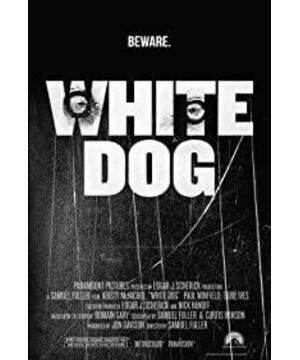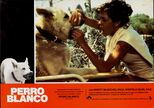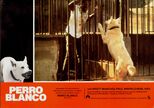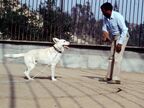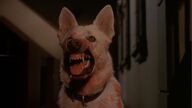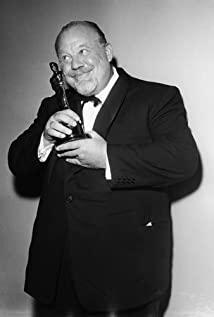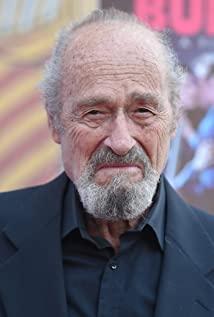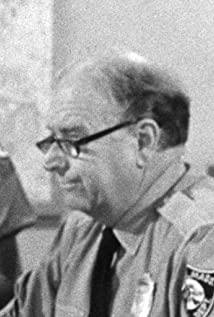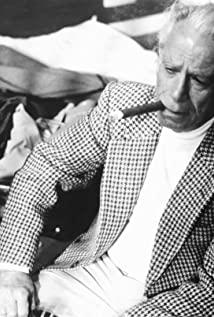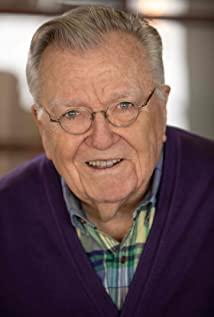Martin Scorsese says:
Some people say that if you don't like the Rolling Stones, you don't like rock music. By the same token, I think if you don't like a Samuel Fuller movie, you don't like it. Maybe my words are not easy to understand, yes, Sam's films are always careless, vulgar, and sometimes quite rough, and lack some sensitive and delicate things. But these are not shortcomings, but more reflect his temperament, his journalism experience and his sense of urgency. His films are wonderful representations of the creator of the image himself. Even those vehement, biased and crude opinions tend to be driven by enthusiasm rather than recklessness.
This year marks the 105th birthday of Samuel Fuller. For such a veteran film director, Americans call him "the third-line godfather of American B-movie, film noir, and independent films".
Everyone in the French New Wave liked Samuel Fuller, François Truffaut said:
"You can't say to yourself with a Samuel Fuller movie, 'This movie shouldn't have been made this way, it should have been made faster, one way or another.' It had to be made that way, Fuller made a 'born' movie and he never wastes time thinking."
Scorsese also expressed the same opinion, he believes that Fuller's film is the purest film, "this man has no time to pile up those posturing words", but to follow the flow of emotion, full of passion.
"Hammer!"
I think American directors, or writers, artists born in Samuel Fuller's era are more or less like him, Bukowski, Henry Miller, they all have that New York street style in them. Roughness and passion, that is the temperament of those who have lived among thieves, prostitutes and gamblers, and have lived through war. This is how Fuller grew up. He was born in a Jewish immigrant family in Massachusetts. In August 1912, his mother was from Poland and his father was Russian. His surname was Rabinovich. The name comes from a doctor who first came to the United States on the Mayflower. Fuller mentioned in his autobiography "The Third Face" that he learned to speak very late, not uttering his first word until the age of five - "Hammer!" After Fuller's father died, the family moved When he arrived in New York, when he was 12 years old, he began to work as a newsboy for a newspaper to subsidize his family, which became his first friendship with the news. It doesn't matter what, it matters how loud you shout." At the age of 17, Fuller worked as a crime reporter for the New York Evening News and the San Diego Sun, with the sensationalism of interviewing these pornographic tabloids. He also wrote some three-cent novels. In 1935, he wrote his debut novel "Burn Baby Burn", and he wrote two more the following year. After he got his work, Fuller quit his newspaper job and went to Hollywood to write scripts for a living, at first helping others as a gunman. In 1938 he sold his first play, Gangs of New York, about what he saw on the streets of New York when he was a reporter. In 1940, the German Air Force began bombing rotations, and Fuller began to focus on the war, and he immediately wrote a play called "Confirm or Deny," about a group of Associated Press reporters trapped in London during an air raid. , The great director Fritz Lang, who was in the United States at the time, took a fancy to this story and planned to direct the film, but he gave up in anger because the production company insisted on revising the script.
"This story has no end"
Godard invited his idol Samuel Fuller to star in Pierrot. He asked the hero of the film to ask Fuller, "What is a movie?" Fuller answered him with a cigar: " Movies are battlefields.” After the Japanese attacked Pearl Harbor in 1941, Fuller, 29, stepped into the battlefield to witness the “world’s greatest crime story.” He was initially assigned to the Information and Communications Department, but he quit and insisted on joining the infantry. In his later years, Fuller filmed the war film "Red 1st Column", in which he described his experience in the war in the form of an autobiography. The so-called "Red 1st Column" is the first division of the U.S. Army who had made great achievements in the Revolutionary War. Fuller followed the troops from Algeria in North Africa to Sicily in Italy. When the troops arrived in England, he had a tea with Hitchcock, and then participated in the Normandy landing in 1944. On that day, Fuller's division was attacked by the Germans on the beach, and they jumped into the sea covered with mines, "drinking sips of water mixed with the blood of their comrades..." ("The Outsider in Hollywood - Samuel ·Fuller and the war film" ·Wu Guo)
Returning to the United States, Fuller continued to work as a screenwriter with the support of his friends and made two films. The outbreak of the Korean War in 1950 stabbed Fuller on the nerves, and he decided to make a war film. No matter in America then or now, war movies have always been about heroism. They portrayed those great people who could turn the tide of the war, shouldered the justice and pride of the nation, and had self-sacrifice and humanitarianism. Spirit, Fuller hated this set, saying that war was nothing but "organized madness" and that the only heroism was "how you survived." A person who has really lived through war from beginning to end has a view on war and anti-war beyond our imagination. When Truman ordered the atomic bombing of Hiroshima and Nagasaki, Fuller voted for it because he firmly believed that "war Prolongation is the most brutal." The extreme violence and unacceptably brutal truth make Fuller's films doomed to stand on the fringes, and sometimes on the opposite side of society. After making his first war film, "Helmets," Fuller was immediately investigated by the U.S. Department of Defense. In the film, Fuller imagined a squad of whites, blacks and Japanese-Americans who were left behind in North Korea. A black hygienist ridiculed that he could only sit in the back of a bus while working for the people in the front.
The Department of Defense considered Fuller a communist platform, and accused him of depicting American soldiers killing prisoners of war against reality. Fuller's response was that he had experienced all of this. War has no heroes, no great romantic love, or even an end. At the end of "Steel Helmet", where it should have been "the end of the play", Fuller put it this way: "There is no end to this story. this story)".
The "third face" of violence
In addition to war films, Fuller also made a number of breathtaking low-budget noirs, always one after another violent, in the western "Forty Guns" (1957), Fuller described the arrival of small The collision between the town's bailiff, Bonaire, and a strong woman, Jessica, who is the leader of the forty gunmen in this town, is close to the existence of the underworld boss, and has a high reputation.
Bonaire was also a one-time sensation, conquering the West with a good gun, and they fought each other several times, only to fall in love during a sandstorm. However, the younger brother of the female leader Jessica did not deal with Bonaire, resulting in a deeper and deeper conflict. During a law enforcement, Bonaire beat him with a gun. Since then, the latter has sought to assassinate him, even shooting his brother at a wedding.
One side is love, the other side is violence, there is no hero, there is only a sad man who lost his love and his brother. Fuller once said: "I hate violence, but that doesn't stop me from using it in my films. It's part of human nature, violence is always there, violence breeds violence, even if a nonviolent person is attacked, He will fight back to protect the things he loves."
In Fuller's few color films, White Dog (1982), he explored issues of violence and racism. In the era of rampant Ku Klux Klan, the United States had such a group of extreme racists who trained the strongest and most ferocious dogs to become "white dogs" specially designed to hunt black people. It was such a "white dog" who was rescued by a beautiful white woman in a car accident and kept as a pet dog in her home. By the time she found out what was wrong with the dog, it had hunted down several blacks and was covered in blood. Because she could not bear to destroy her pet dog humanely, the woman sent the "white dog" to an institution called "Noah's Ark" that specializes in domesticating wild animals. Most of the employees in this organization are black. When they heard such a "white dog", which symbolized extreme hatred and their blood-stained history of humiliation, most of them were full of grief and anger, and only one stayed. down. He's also black, and he's determined to tame the "white dog" by doing this to prove to this innocent but violent dog that its evil former owner was wrong.
But the "white dog" was out of control. It escaped from the cage and killed another black man. The thoughts of violence and violence had eaten into its bones, even if the black trainer later claimed that it had been domesticated and corrected. Now, no one dares to believe 100% that it won't stick out its fangs again. Samuel Fuller wrote an incredible conversation after finishing "The White Dog" about his own conversation with the film's white dog, a dog, to express his views on racism. view:
Fuller: Do you think black people will like this movie?
Dog: Of course.
Fuller: What about paranoia?
Dog: They'll condemn the movie.
Fuller: Why?
Dog: Because you show them naked. They'll call it anti-American, anti-social trash, and they'll have an outcry about the movie. Have you ever seen a zebra killed for its stripes? Or did the lion attack an ape for religious reasons? You humans call us mad dogs when we have rabies, which is unbelievable, rabies is an infectious virus of our central nervous system, we didn't create it or nourish it. A rabid dog is as helpless as the white dog in the movie, but in the history of canines, no adult dog has ever trained a puppy to get rabies. You arrogant humans, standing at the top of the pyramid, this is nonsense! Humans only have hatred! And animals, never, ever.
At the end of the film, the "white dog", trained to attack blacks, turns to hate whites after being domesticated by blacks. In the dialogue written by Fuller, he borrowed the dog's mouth and said, "The dog I play will keep me awake until I die..." There is no end" polyphony. In "Corridor of Horror" (1963), Fuller used the surreal to show the inexorable trauma of violence, and in "White Dog" he created this disturbing realism. And all this, for Samuel Fuller, is a personal experience.
————————————
This article is the first to be published on the Barcelona Film APP, and any form of reprinting, quoting, or editing is refused.
Please send a private message to cooperate, make an appointment, and hook up~~
View more about White Dog reviews


